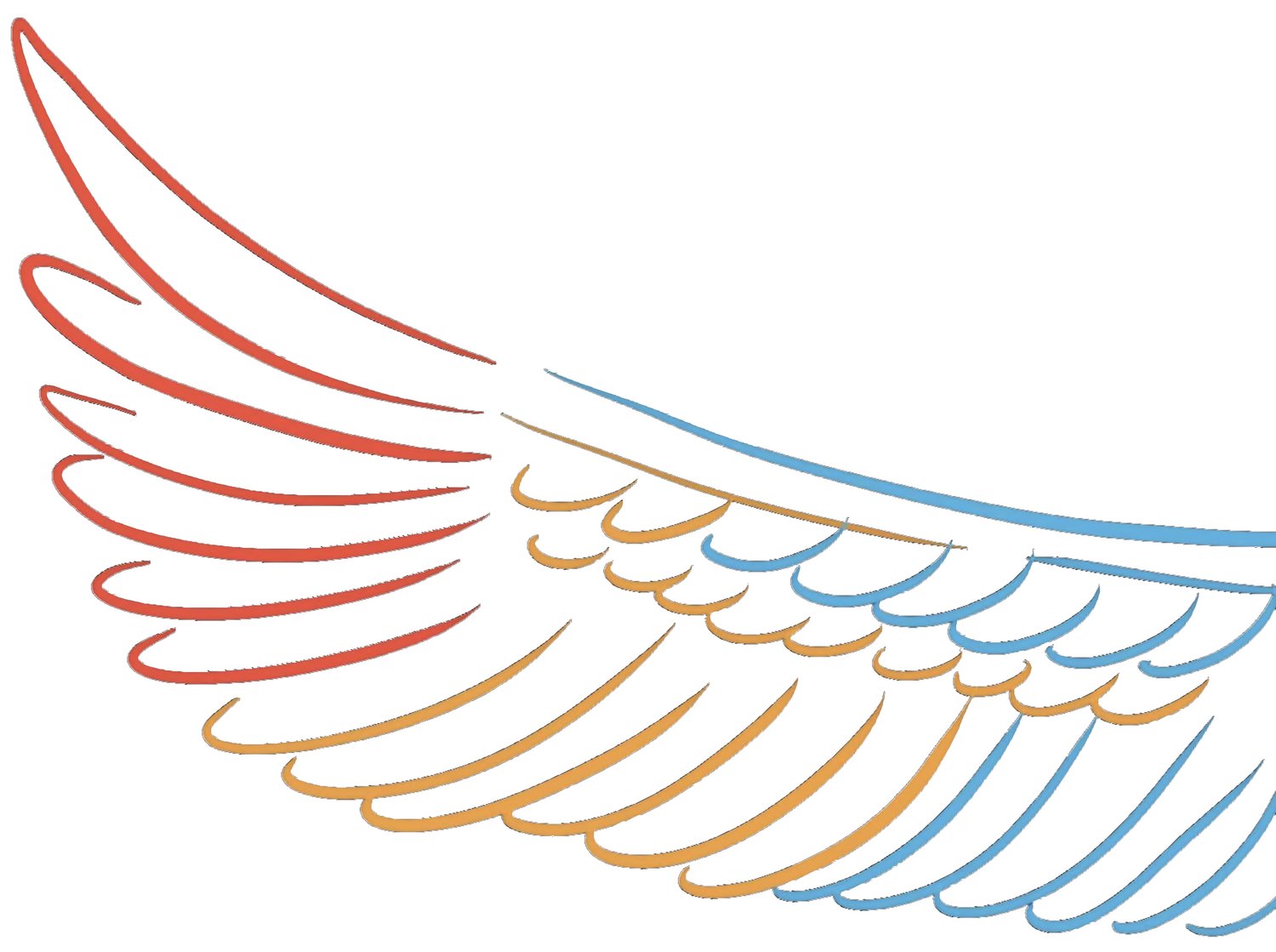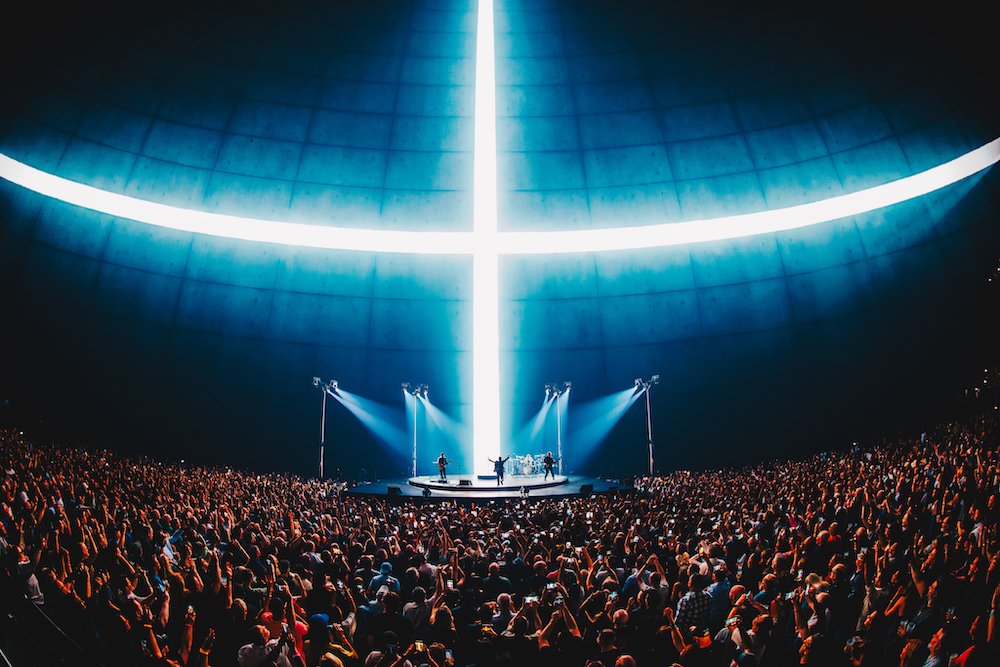The Edge of Innovation: U2 in the Sphere.
A U2 super fan’s review of U2:UV.
U2 in the Sphere, taken by Rich Fury.
Formed in 1976, U2 is an Irish rock band with contributions from: Bono, with lead vocals; The Edge, on lead guitar; Adam Clayton, on bass guitar; and Larry Mullen Jr., on drums. They have released 15 studio albums full of evergreen hits like “With or Without You,” “Beautiful Day,” and “Sunday Bloody Sunday.” On top of being one of the world’s most commercially successful music groups, having sold over 150 million records, the band has won 22 Grammy Awards and was inducted into the Rock and Roll Hall of Fame in their first year of eligibility in 2005. I’d say U2 is the greatest rock band of all time, but that argument is for another article. Thanks to my dad, I’ve become a superfan by osmosis, and I’ve got the stats to prove it. Every lyric? Memorized. Spotify likes? 262 U2 tracks and counting. Dorm room aesthetic? A floor-to-ceiling shrine to the Irish rock gods. And the cherry on top? Scoring tickets to their performance in the Las Vegas Sphere on opening night, which was the best night of my life, bar none.
However, to fully appreciate the show, you must first understand how the Sphere and U2 got here. Rock’s first stadium concert was in 1965, when the Beatles performed in New York’s Shea Stadium to 56,000 screaming fans. Festivals aside, there is no more famous gig in rock & roll history. However, neither the majority of the audience nor the Beatles themselves could hear what they were singing. The Sphere solves the venue problems that started with this infamous concert. More than a spherical screen, it is a space that is purposefully built for musical performances unlike the sport stadiums that musicians have been forced to adapt to for the last 50 odd years.
Able to accommodate over 19,000 guests, the Sphere’s 167,000 speaker drivers provide each attendee with crystal clear audio as they are immersed in the 16k wraparound LED screen. It is the next evolution of the live experience. It’s also a natural progression for U2: they’ve been at the frontier of innovation in the concert space since their Zoo TV tour in the early 90s.
Zoo TV Tour, from Medium.
Staged in support of their 1991 album, Achtung Baby, the same album the band is now revisiting in the Sphere, Zoo TV was an elaborately crafted multimedia spectacle. Satirizing television and media oversaturation, each concert displayed a rapidly changing mix of live and pre-recorded video on giant monitors situated around the band. While contemporary audiences have become used to this multisensory experience at a stadium concert, this was a revolutionary idea in 1991. Moreover, by the numbers, it was the biggest and most expensive stadium spectacle the world had seen up to that point.
U2 360° Tour, from Flickr.
That record remained untouched until U2 topped themselves with 2009’s 360° Tour that featured the largest and perhaps most unique stage ever constructed. Centered around their album No Line on the Horizon, the 360° Tour featured a circular stage that allowed the audience to surround the band on all sides. To accommodate for this unique stage configuration, a 164-foot tall, four-legged steel structure was constructed above the stage with a built-in sound system and a circular, expanding video screen on top of it.
As the music industry veered away from rock in the 21st century, U2’s knack for transforming their albums into these vast, memorable live spectacles kept them at the vanguard. Now, as they mark Achtung Baby’s 30th anniversary with U2:UV, they’re elevating the live experience once again.
When you first walk onto the floor of the Sphere—I was in general admission—the massive domed ceiling looks like some sky-high industrial grain silo, the inside seemingly made out of a hemispherical grid of rusted metal sheets. Disoriented after waiting in line for hours to get a spot close to the stage, I actually didn’t realize that this metal enclosure was just a screen until ten minutes after I had entered the venue. It was an immediate indication of some of the offbeat photorealism that I would be in for.
U2’s opening sequence shattered this metallic enclosure, unveiling a magnified homage to the sensory overload of their Zoo TV tour before ushering in the next evolution of the live experience with their otherworldly performance of “The Fly.” When the band took the stage, Bono crooned an old Irish tune, his towering 50-foot silhouette cast against the virtual metallic backdrop. The Sphere appeared to have been stripped of its technology, the audience secluded from the outside world in a virtual bunker as Bono conjured some ancient Irish force, or, in this case, the first roaring chord of Achtung Baby’s opening track and certified banger: “Zoo Station.” With every strum from The Edge’s guitar, the metal enclosure began to fracture, until the dome shattered into quadrants. Freed from our seclusion in that metal silo, the audience suddenly found themselves enveloped in a collage of rapid montages and slogans that pay tribute to the Zoo TV tour’s revolutionary design. The dome of strobing images reconnected the audience with U2’s pioneering spirit, setting the stage for a journey beyond any other live performance they’ve ever seen. Echoing the silo’s earlier rupture, The Edge’s solo in “The Fly” extinguished the Zoo TV montage and birthed a rising spire of colorful letters and numbers that seemed to soar thousands of feet upward. This vibrant cylindrical enclosure then transformed into a five-sided prism whose “ceiling” descended upon the crowd: I thought I had to duck and avoid being squashed! One can only imagine how the designers had to bend the laws of physics to create this illusion on a spherical screen.
“The Fly” in the Sphere, taken by Rich Fury.
Between the high-voltage Achtung Baby sets, the show pivots to a four-song acoustic segment, balancing the elaborate special effects and roaring cords of Achtung Baby with the candor of this unplugged interlude. On opening night, the spotlight turned to Rattle and Hum for an intimate four-song tribute. Earlier in the show, Bono told the crowd that “we are gonna get married tonight.” Bono returned to this courting concept in this intimate middle portion of the show, claiming that “we need to take a break from all that intensity” of Achtung Baby so we can “get to know each other.” Bono then let his betrothed audience in on a secret: “All I Want Is You,”—the first non-Achtung song that they performed—“is an attempt to write a wedding song from a woman’s point of view.” “There you have it,” he said, “never told that to anyone.” Without the choreography required to play in tandem with the Sphere’s visuals, Bono was able to engage the audience in an intimate conversation between songs. Furthermore, the four songs off Rattle and Hum, although stripped back in their presentation, took on a life of their own with spontaneous detours into classics like “Into the Mystic” and “Dancing in the Moonlight.” In my favorite moment from this acoustic interlude, Bono wrapped up their final Rattle and Hum song, “Desire,” with “Love Me Do” before letting the audience in on another secret. “Mecca is in the house tonight,” Bono announced. “Paul McCartney is here…just know that we love you and we’ve stolen a lot of your songs,” he quipped. In a concert that continually redefined the live music experience, this impromptu segment carved out a moment of unvarnished intimacy and playful spontaneity that encapsulated the original spirit of rock & roll.
For me, the pinnacle of the concert came during “Where the Streets Have No Name.” As the song’s iconic opening guitar riff roared throughout the Sphere with stunning quality, the venue was transformed into a vast desert under a clear blue sky. Immersed in this outdoor mirage, everyone in the audience seemed to share awestruck glances at each other, amazed at how realistic the virtual daylight seemed. While the visual trickery of “The Fly” was impressive, I knew that the rising pillar of multi-colored symbols couldn’t be real. This virtual blue sky, on the other hand, truly blurred the lines between reality and spectacle. Paired with the soaring chords of Joshua Tree, the transition from Achtung Baby’s darker tones and energy to this luminous scene felt like more than a purely visual or auditory experience. It was physically uplifting, surpassing any expectations I had of a concert’s power to move me. At the center of this digital expanse, a towering white flag, seemingly sculpted from clouds, billowed above us. Harkening back to the singular, 20-foot white flag of U2’s 1983 War Tour, this ethereal banner symbolized the band’s ascent from humble beginnings to the pinnacle of musical fame: a visually stunning and emotionally resonant tribute to their enduring legacy.
“Where the Streets Have No Name” in the Sphere, from Dezeen.
Despite their personal evolutions since the debut of Achtung Baby, and the many questions facing rock & roll’s place in technological spectacle, U2 masterfully harnessed the Sphere’s staggering potential to amplify the raw energy of Achtung Baby and showcase some truly moving tributes to many other hits from their discography. The show was at once an experience unlike any other yet still unmistakably rock & roll. At times it felt dystopian and at others it achieved a radical sense of intimacy.
For me, it was simply the greatest night of my life.
edited by Joyce Zhang.
photos by Rich Fury and Dezeem or retrieved from Medium and Flickr.





